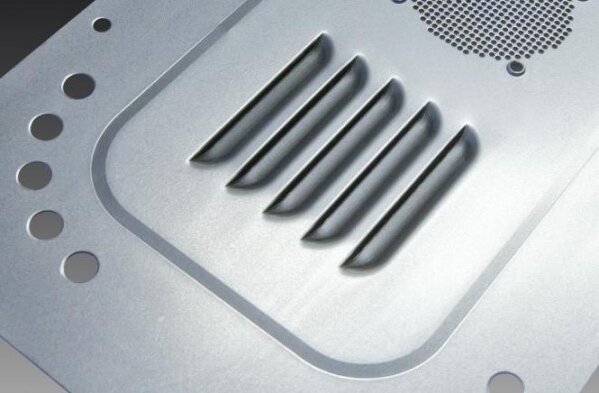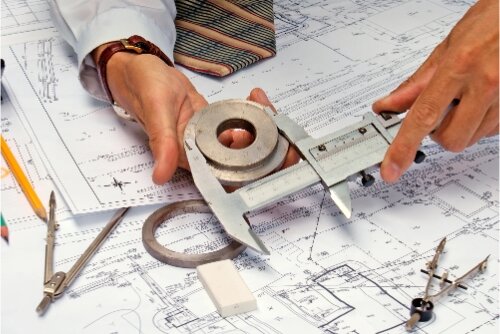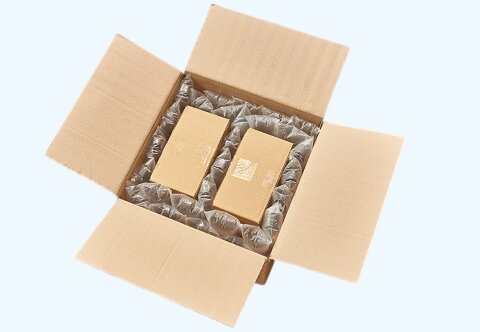Are you looking for a way to create precise, repeatable cuts in metal sheets? CNC punching might be the solution you need. This method uses a computer-controlled punch press to create holes and shapes in metal with high accuracy and speed. Let me explain how it works and why it might be perfect for your project.
CNC punching is when a computer directs a punch press to move according to a programmed pattern. The press punches out shapes, holes, or designs in sheet metal. It’s ideal for both prototypes and large production runs due to its precision and efficiency.
Curious to know more about its benefits and applications? Let’s explore further.

What is CNC Punching?
Basic Principles of CNC Punching
Automatism is the basis of CNC punching. A computer program controls the movement and actions of the punch press. The program is created based on specific project dimensions and patterns. The punch press follows these instructions to punch the holes or shapes in the sheet metal.
The first step is to secure the sheet metal onto the work table. The CNC controller guides the punching heads to the correct positions. Punch and die sets are used by the punching head to create desired shapes. Each punch is accurate, ensuring consistency across all pieces.
The Key Components in CNC Punching Machines
The CNC controller
The CNC controller is like the brain of the machine. According to the program, the CNC controller interprets and directs the movement of the punching table and head. It ensures that each punch is placed exactly where the design specifies.
The Punching Head
Punching heads are machine parts that punch the shapes or holes into sheet metal. The CNC controller gives instructions on how to move, ensuring precise punches.
The Worktable
It holds the sheet metal in position during the punching procedure. The worktable moves with the punching heads to accurately position the sheet metal for each punch. This allows for accuracy and stability throughout the entire process.
Punch and Die Sets
The punch is an elongated piece used to press into the sheet metal. The die is the matching piece below that receives it. Together, they produce the desired cutouts with high precision.
How Does CNC Punching Work?
CNC Punching Process
Setup the Machine
We first set up the CNC machine. The first step is configuring the punch and die set based on specific design requirements. It’s essential to have the correct tools for each project.
Programming a CNC Punch
The next step is to program the CNC punch. This step is crucial as it determines how the machine moves and acts. The CNC controller translates the design parameters to precise instructions for the press. This program ensures the machine knows where and how to punch the sheet metal.
Material loading and positioning
The sheet metal is then loaded onto the work table. For accurate punching, it is essential to position the sheet metal correctly. The worktable secures the sheet metal to remain in place throughout punching. To prevent errors, we double-check alignment.
The Punching Cycle
Finally, we start the punching cycle. The CNC controller guides the punching head and the worktable to ensure the programmed pattern makes each punch. The punching heads move to the predetermined positions and precisely punch out the sheet metal. The cycle is repeated until all required shapes and holes have been punched.
Different types of punching techniques
Single-Hit Punching
The most straightforward technique is single-hit punching. The machine punches one hole or shape in a single stroke. This method is most efficient when the design has fewer shapes or holes.
Cluster Punching
In cluster punching, multiple holes are punched in one stroke. This technique can simultaneously create patterns or multiple holes, saving time and increasing productivity.
Nibbling
The machine creates a large shape or curve by overlapping a series of small punches. This method is perfect for intricate designs or irregular shapes.
Forming & Embossing
To form and emboss the sheet metal, it is necessary to do more than punch holes. The machine creates raised or receded metal features with special punch and die sets. This technique enhances the functionality of the final product and adds aesthetic appeal.

Materials used in CNC Punching
Common Materials
Metals (Steel, Aluminum, Copper)
We use a variety of metals in CNC punching. Steel is popular due to its durability and strength. Aluminum is famous because of its lightweight and resistance to corrosion. Copper is chosen for its high electrical conductivity.
Non-metals (Plastics, Composites)
Plastics and composites are also used. Plastics are light, versatile, and cost-effective. Composites combine materials to provide improved properties such as increased strength and weight reduction.
Material Considerations and Properties
Material Thickness
The thickness of the material is an essential factor when CNC punching. Thick materials need more force to be punched through. This can have an impact on the machine settings and tools.
Material Hardness
The hardness of the material is also essential. More rigid materials can reduce the punch and die set’s lifespan.
Surface Finish Requirements
Some projects require a clean, smooth finish, while others may prioritize functionality. Our punching techniques and tool choices are adjusted based on desired surface finishes to ensure we meet the needs of each project.
CNC Punching Applications
Automotive Industry
- Brackets
- Panels
- Mounting plates
Aerospace Industry
- Structural components
- Airframe parts
- Brackets
Electronics and Electrical Enclosures
- Chassis
- Enclosures
- Mounting plates
Office Equipment
- Computer Cases
- Printer components
- Metal desks
HVAC Systems
- Ductwork
- Ventilation components
- Mounting brackets
Furniture Manufacturing
- Metal frames
- Shelving Units
- Cabinet parts

CNC Punching: Pros & Cons
It has its limitations, as well as many advantages. Understanding the strengths and limitations of CNC punching can help you make informed decisions about your manufacturing process.
Pros:
- Speed, Efficiency, and Productivity: CNC Punching is an efficient process that can produce multiple parts quickly.
- Accuracy & Precision: CNC Machines excel at producing accurate and consistent parts.
- Versatility: Can be adapted to various designs with various patterns and shapes.
- Cost-effective: CNC punching is more cost-effective than laser cutting for high-volume production.
- Material Efficient: Less material is wasted compared to cutting processes.
Cons:
- Tool Restrictions: The tool is limited to shapes produced by available dies and punches.
- Material Thickness Limitations: There is a limit to the thickness of materials that can be punched.
- Tool Wear: Dies and punches can wear over time and require replacement. This will affect the quality of your parts.
- Formation of Burrs: The edges of punched-out holes can develop burrs, which often require additional finishing procedures.
- Noise: CNC Punching Machines can produce significant noise levels. Soundproofing is required.
CNC Punching vs. other fabrication methods
Laser Cutting vs. CNC Punching
Speed and efficiency
Speed is a crucial difference between laser cutting and CNC punching. CNC punching machines can process sheets at incredible speeds, particularly for large runs of standard patterns. Laser cutting is a precise process that takes longer due to its meticulous nature.
Precision and Quality
Laser beams can produce highly detailed cuts with smoother edges. This is important for applications that require fine detail. CNC punching is very accurate, but the dies and punches’ shape can limit the quality of the finished product.
CNC Punching vs. Stamping
Flexible and customizable
The flexibility of CNC punching is unmatched. CNC punching machines, unlike stamping machines, use interchangeable or standard tooling to instantly create different shapes and designs. It is easier to switch between production specifications.
Cost and production volume
Due to the initial costs associated with creating dies and installing presses, stamping is generally only cost-effective for huge volumes. CNC punching is more cost-effective than stamping for jobs of lower to medium volumes due to its reduced setup time and lower costs.
Conclusion
CNC punching can be used in a variety of industries. It is ideal for prototyping and mass production due to its high precision, speed, and cost-effectiveness. Understanding its limitations and comparing it with other methods, such as laser cutting and stampeding, will help you make an informed decision for your project.
Do you need a reliable sheet metal parts manufacturer? Shengen is the place to go. We specialize in sheet metal laser cutting, bending, surface finish, and CNC Machining. Reach out to Shengen Today and seek help from professionals!
FAQs
How long does a CNC punching machine last?
A CNC punching machine’s lifespan can range from 10 to 15 years, depending on the usage, maintenance, and working environment. Its lifespan can be extended significantly with regular maintenance and proper use.
What is the impact of CNC punching on production costs?
CNC punching reduces production costs by reducing labor costs, minimizing material waste, and accelerating the process.
Can CNC punching handle complex shapes or designs?
Yes, CNC punching is capable of handling complex shapes and patterns. The programmability of the machine allows for intricate patterns and precise cuts. The nibbling technique allows for the creation of irregular shapes and curves, allowing flexibility in design.
What maintenance is required for a CNC punching machine?
Maintenance of CNC punching machines involves regular lubrication, inspection, and replacements of worn-out punch and die sets. Also, the CNC controller must be calibrated and periodically cleaned to prevent dust build-up.
What is the best CNC punching machine to suit your needs?
Consider factors such as the type of material and thickness you will work with, your production volume requirements, the complexity and size of the design, and the budget when choosing the best CNC punching machines. Make an informed choice by comparing machine capabilities, specifications, and support services.
More Resources:
CNC Punching vs Stamping – Source: Linkedin
Laser Cutting vs CNC Punching – Source: Westway Machinery
Hey, I'm Kevin Lee

For the past 10 years, I’ve been immersed in various forms of sheet metal fabrication, sharing cool insights here from my experiences across diverse workshops.
Get in touch

Kevin Lee
I have over ten years of professional experience in sheet metal fabrication, specializing in laser cutting, bending, welding, and surface treatment techniques. As the Technical Director at Shengen, I am committed to solving complex manufacturing challenges and driving innovation and quality in each project.




